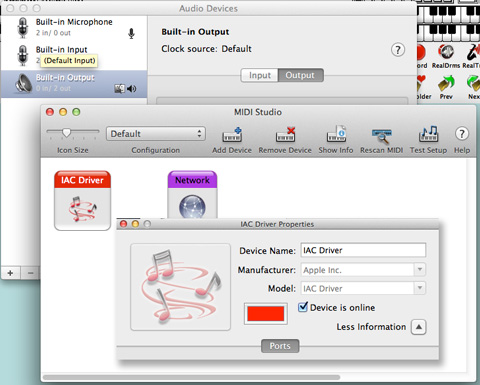


Samplers and beat machines! (Feature film length territory 😅) … 3 years ago RT CUCKOOMUSIC: Part 3 of my preparations for a new live set. Using a #tascam portastudio as an instrument: /watch?v=nxi7Rw… #drone 3 years agoĮmulating the idiosyncrasies of vintage analog gear with #novation #peak: /how-to/master-… 3 years ago How to make drum patterns - rhythms every producer should know (with MIDI). Update: During a sleepless night I found a interesting experiment with Ableton and the IAC ports. But that is another story, which today will not yet be revealed. If you want, you can change port names after double-clicking on the name. The default name for a second port is “IAC bus 2”. If this port is already in use by other applications on your computer, you can create an additional port by clicking the + button. By default a port called “Bus 1” already exists. Each such port can act as a kind of virtual cable to make a Midi connection between two different applications. The bottom part of the dialog (you may have to click the arrow next to “More information” to get to see this), you find an overview with driver ports. In the Audio MIDI setup window, the icon will no longer appear grayed out. In the properties dialog, click the “Device is online” checkbox to make the driver active. Double-click the IAC Driver icon to bring up its properties dialog. If you have never used the IAC Driver before, the icon will appear grayed out.

You will now see an icon for the IAC Driver. Perhaps you have go the menu and select Window/Show MIDI window. You can find the IAC Driver by typing Audio MIDI setup in Spotlight, or start Audio MIDI Setup from /Applications/Utilities.


 0 kommentar(er)
0 kommentar(er)
